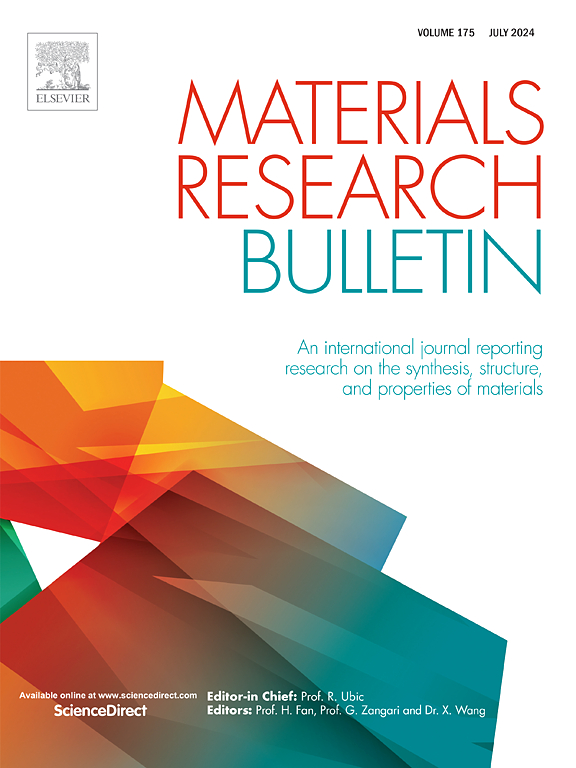Humidity-enhanced photodegradation mechanism of UiO-66-NH2 metal organic framework
IF 5.3
3区 材料科学
Q2 MATERIALS SCIENCE, MULTIDISCIPLINARY
引用次数: 0
Abstract
The Zr-based metal-organic framework UiO-66-NH2 has been investigated to study the effects of ultraviolet and visible light exposure under dry air and humid environments. Significant impedance and color changes in the material due to ultraviolet and blue light have been observed. These changes happen more rapidly and grow larger in total cumulative magnitude as the atmospheric humidity increases. Samples placed in darkness or in the presence of light with lower energy than blue (450 nm) light showed no discoloration or degradation, regardless of humidity. Impedance data modeling suggests that humidity increases the ionic conductivity of the material and that the degradation occurs at grain boundaries, to a depth that increases with humidity. Nuclear magnetic resonance, X-ray diffraction, and Fourier transform infrared spectroscopy indicate that degradation in samples exposed to light are due to broken linkers between the benzenedicarboxylic acid and Zr clusters. Distribution Statement A. Approved for Public Release. Distribution Unlimited.

UiO-66-NH2 金属有机框架的湿度增强光降解机制
研究人员对 Zr 基金属有机框架 UiO-66-NH2 进行了调查,以研究在干燥空气和潮湿环境下紫外线和可见光照射的影响。在紫外线和蓝光的作用下,材料的阻抗和颜色发生了显著变化。随着大气湿度的增加,这些变化发生得更快,总累积幅度也更大。无论湿度如何,将样品放置在黑暗或能量低于蓝光(450 纳米)的环境中,都不会出现变色或降解现象。阻抗数据模型表明,湿度增加了材料的离子传导性,降解发生在晶界,其深度随湿度增加而增加。核磁共振、X 射线衍射和傅立叶变换红外光谱分析表明,暴露在光线下的样品发生降解的原因是苯二甲酸和 Zr 簇之间的连接体断裂。发行声明 A. 批准公开发行。发行无限制。
本文章由计算机程序翻译,如有差异,请以英文原文为准。
求助全文
约1分钟内获得全文
求助全文
来源期刊

Materials Research Bulletin
工程技术-材料科学:综合
CiteScore
9.80
自引率
5.60%
发文量
372
审稿时长
42 days
期刊介绍:
Materials Research Bulletin is an international journal reporting high-impact research on processing-structure-property relationships in functional materials and nanomaterials with interesting electronic, magnetic, optical, thermal, mechanical or catalytic properties. Papers purely on thermodynamics or theoretical calculations (e.g., density functional theory) do not fall within the scope of the journal unless they also demonstrate a clear link to physical properties. Topics covered include functional materials (e.g., dielectrics, pyroelectrics, piezoelectrics, ferroelectrics, relaxors, thermoelectrics, etc.); electrochemistry and solid-state ionics (e.g., photovoltaics, batteries, sensors, and fuel cells); nanomaterials, graphene, and nanocomposites; luminescence and photocatalysis; crystal-structure and defect-structure analysis; novel electronics; non-crystalline solids; flexible electronics; protein-material interactions; and polymeric ion-exchange membranes.
 求助内容:
求助内容: 应助结果提醒方式:
应助结果提醒方式:


